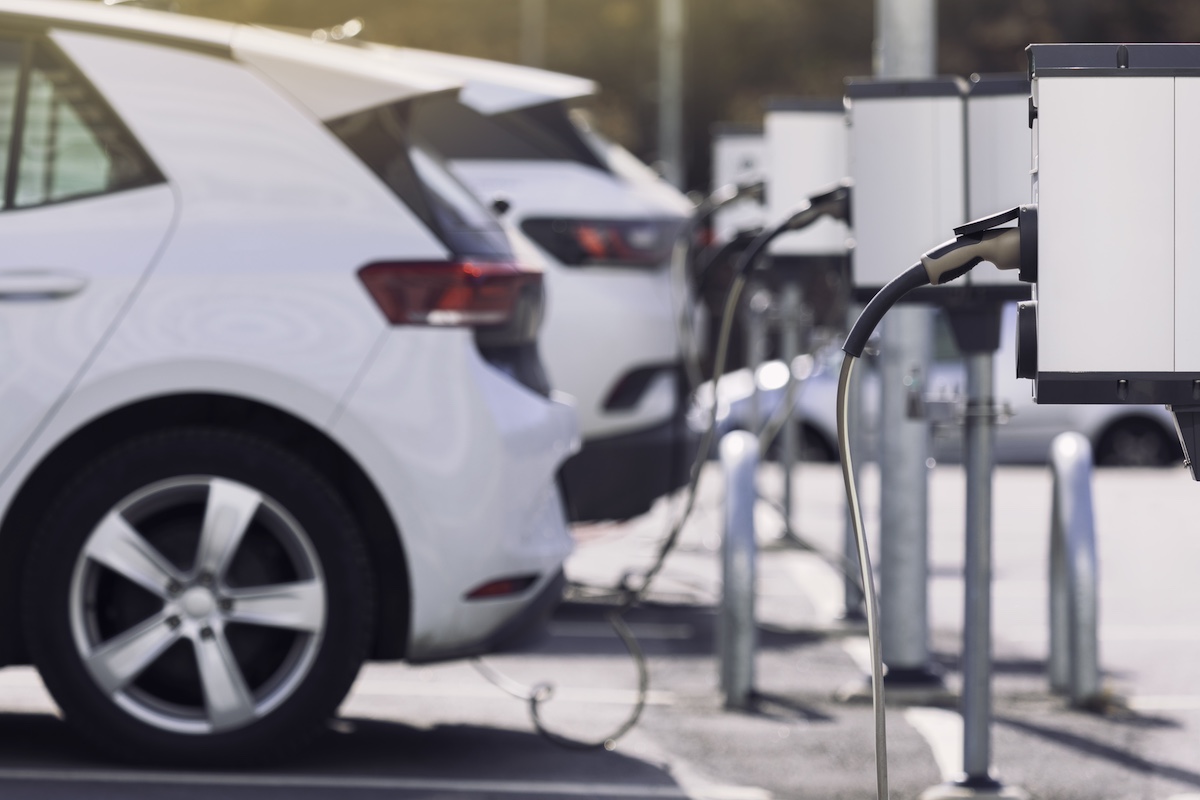
Worldwide electric vehicle sales jumped 49% in the first half of 2023, totaling 6.2 million vehicles and capturing 16% of the overall global light vehicle market.1 China and Europe remain the largest EV markets, but the United States is gaining ground. Tesla remains a dominant brand in the United States, but experts in the industry suggest that a wider range of EV options from a number of competitors will continue to spur interest and sales.1
With estimated global sales of more than 14 million vehicles in 2023 — a 39% increase over 2022 — EV market trends have rightfully earned notice by automakers, their suppliers, and consumers alike.1
Electric Vehicle Technology Explained
The U.S. Department of Transportation (U.S. DOT) recognizes four types of electric vehicle technology: battery electric vehicles (BEVs), plug-in hybrid vehicles (PHEVs), fuel cell electric vehicles (FCEVs), and traditional hybrid electric vehicles (HEVs).
BEVs and PHEVs are designed to accept charging from external sources and can operate with zero tailpipe emissions.
[Source: US DOT2]
FCEVs and HEVs, on the other hand, do not have batteries that accept external recharging. FCEVs operate by converting hydrogen into electricity. HEVs are powered by a combination of an internal combustion engine with an electric motor with a contained battery pack.
That’s not to say that there's a lack of versatility in the EV market; judging by the current and upcoming models, the opposite is true. However, like the US DOT, electric mobility trends tend to focus on BEVs and PHEVs.
Electric Vehicle Trends Worth Watching
EVs are popular, but they're not a fad. As their presence grows as a more sustainable transportation option, governments the world over are forging new ground, principally in critical mineral management and infrastructure support.
Critical minerals legislation and management
The spike in demand for electric vehicles naturally correlates to higher demand for batteries and the critical minerals that power them — lithium, nickel, cobalt, manganese, graphite, and copper. These raw materials are mined from the earth and not uniformly deposited throughout the planet.
Countries with greater access to critical minerals could put others at a competitive disadvantage without equitable distribution. In the U.S., a critical minerals list is maintained by the government to ensure supply chain security, and other legislation is underway to strengthen U.S. access to these needed resources.
Likewise, the U.S. is reaching overseas to secure partnerships to keep critical mineral policies and practices in check. The U.S. and Japan recently aligned to address these matters, and also generate support for mineral-focused trade deals through EV tax credits throughout Japan, the EU, and South Korea.
This is only the beginning of what will likely become complex and ongoing debate in national and international political arenas.
Repair and replacement of the U.S. electric vehicle charging infrastructure
As part of the 2021 Bipartisan Infrastructure Law, the U.S. Department of Transportation was awarded $100 million to repair and replace the nation’s existing but largely failing EV charging infrastructure.
Among the electrification improvements are more station locations — sites with one or more charging ports — and interfaces that support all charging levels:
- Level 1 charging through 120V alternating current
- Level 2 charging through 240V (residential) or 208V (commercial) current
- DC Fast Charging through direct current for fastest charging, especially along heavy traffic corridors — 20% of public EV charging ports in the US are fast chargers2
Battery chemistry innovation
As legislation moves forward, so does EV battery innovation for consumer and commercial applications. Lithium-ion batteries have been the go-to, but automotive industry suppliers are challenging the status quo. Emerging battery chemistries include:
- Solid-state batteries replace the liquid electrolyte with a solid one to enhance energy dentistry, charging times, and safety
- Silicon anode batteries substitute silicon for graphite to increase energy storage and range capabilities without making EV batteries bigger
- Lithium-sulfur batteries promise future advancements in energy density, lower costs, and the use of more sustainable materials as research continues into cycle life and stability for this format
In the global landscape, forward-thinking scientists are choosing to push the envelope on unconventional approaches, such as:
- Seawater batteries that eliminate dependence on critical minerals in favor of materials found in seawater, which would conceivably cost less, charge faster, have higher energy density, and be more resistant to fire than lithium-ion batteries
- Sand batteries that replicate the use of nanoscale silicon by using silicon dioxide, which is common in quartz and a main ingredient in sand
- WiFi-enabled batteries that use electromagnetic fields to complete energy transfer from charging pads to vehicles which is more convenient and less strain on physical EV charging infrastructures
Sustainability
Sustainability is the impetus behind the rise and acceptance of EVs, and equally part of its future. In addition to electric mobility’s disruption of the automotive industry, there is continued pressure to maximize sustainability at battery end-life.
Several EV auto makers have committed focused research into recycling methodologies and repurposing EV batteries into second-life opportunities such as home energy storage and other potential applications.
Capitalizing on trends with an expert toll processing partner
The EV market is rapidly growing, and the possibilities are exciting. Surpassing what’s known now for a more sustainable, higher functioning future in electric mobility requires automotive industry EV battery suppliers partner with toll processors who understand mineral behavior and can align battery power processing conditions, testing, and scalability accordingly.
With a proven battery powder processor working with you, materials, yield, and costs are typically easier to manage, as are automotive OEM expectations about battery reliability and performance. Find out more about the CPS advantage for electric vehicle technology in our guide, Powder Processing for EV Batteries.
SOURCES
1Canalys, Global EV sales up 49% to 6.2 million units in H1 2023, with 55% of vehicles sold in Mainland China, Undated
2US Department of Energy, Alternative Fuels Data Center: Developing Infrastructure to Charge Electric Vehicles, Undated


.png?width=100&height=110&name=CPS-Logo-rgb-no-callout%20(1).png)
